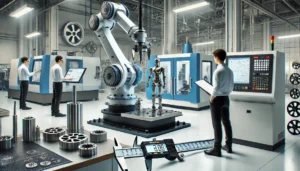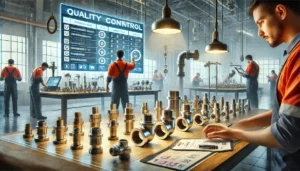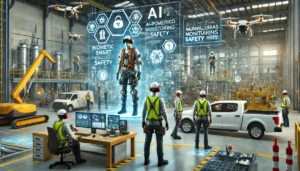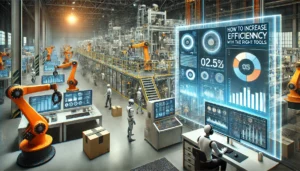Lifting equipment is an essential component for an array of industries for safely and efficiently moving heavy loads. Even the toughest machinery undergoes wear and tear over time leading to negative impacts on safety and productivity. Compromised machinery poses safety concerns and impacts operational productivity. So, here are some indicators which suggest that your lifting equipment needs to be replaced or repaired.
1. Clearly Noticeable Damage
For the lifting equipment to operate efficiently, one must conduct regular inspections of the equipment. Any visible signs of damage like fractures, rust, cracks, deformation, or corrosion are good indications that the equipment is breaking down. For example, chains may elongate or rust, slings show signs of wear and or cuts, or hooks display cracks or loose structures. Such damage poses a major safety risk and considerably reduces the strength and integrity of the equipment to bear heavy loads. Components showing signs of damage need to be replaced and by ignoring these signs the machinery weakens, which could potentially have catastrophic failures.
2. More Repairs and Maintenance Services Come Into The Picture
As lifting machines get older, the repairs needed for them and their maintenance in general tend to go up as well. Equipment that needs regular repairs or has additional servicing requirements, alongside rising maintenance costs may signal the sensible option of purchasing new equipment. The process of repairing obsolete machinery is expensive and leads to long downtimes, which decreases the overall productivity of the company. Frequent repairs escalade maintenance costs and over time the total cost of equipment ownership actually becomes greater than the purchase rate of newly constructed equipment. Upgrades lead to improved operations and lower risks brought by old machines.
3. Performance And Efficiency Drops Dramatically
Equipment performance that lowers drastically is a noteworthy indication that some action needs to be taken. Some actions work, while others do not speed up the lifting machines for any reason. A significant example of inefficiency is a crane or hoist which fails to lift heavy weights for its rated capacity. Exhausted Concepts that are advanced are generally employed with newer models, so workers will need to learn new ways of achieving operational streamline and performance augmentation and inefficiencies will no longer exist.
4. Old-School Safety Features
Most modern lifting equipment is compliant with current safety measures, while older machines may lack the more sophisticated features such as load sensors, better braking systems, and emergency stops. The absence of such modern safety measures can elevate the risks posed to operators and other relevant individuals. Additionally, ignoring outdated safety systems can lead to penalties and other legal challenges for the corporate entity. The replacement of older equipment with newer ones, however, increases adherence to modern regulations and eliminates most workplace hazards.
5. An Abundance of Noise and Shaking
Any overly loud noises or far too strong shaking of the lifting equipment during usage may indicate a more serious internal problem. Such issues can include damaged internal bearings or other machinery, or even problems within the hydraulic circuitry. Such symptoms can also indicate the idea of malfunctioning equipment. For example, grinding sounds produced by a hoist suggests that its gears have worn out or broken, and moaning vibrations can show issues such as structural deformation or a misaligned motor. Routine maintenance and some proactive behavior can greatly assist in averting future accidents. Contrarily, if such repairs do not improve the issues or lead to newer problems rising, then such equipment needs to be replaced for the welfare of everyone involved in its operations.
Advantages of Timely Replacement
There are several benefits in timely replacement of lifting equipment. This increases the safety of the employees, reduces the chances of accidents, enhances productivity, and reduces downtimes. With the new technology, it is common for newer models to have new features, be more energy-efficient, and save a lot more money. Changes in modern machinery technology also mean that less upkeep is required, allowing the workers to focus on other important tasks.
There is also an advantage in speed as new equipment allows for faster and more accurate handling of materials, which greatly increases productivity output. It also contributes to creating a safer and more compliant environment, which is important for a workplace heavily focused on safety. The cost of replacing equipment at the start could be heavy, but the long-term gains will always outbalance the expense.
Conclusion
Lifting machinery is one of the most crucial assets for every industry but a great deal of its usefulness will come down to timeliness of servicing and replacement. Overuse, high repair costs, deteriorating performance, obsolete safety provisions, and strange functioning are signs that replacement is not a choice but a necessity. Ignoring these signs could lead to safety risks coupled with loss of productivity and higher operational costs.
Actively changing damaged tools guarantees greater safety within the workspace while increasing profitability. Modern equipment means modern systems which means enhanced productivity, greater reliability, and adherence to safety standards. One of the business best practices is to ensure that lifting machines are regularly checked for maintenance and promptly replaced whenever needed. In the long term, enhancing safety and performance will ensure cost efficiency, life protection and smooth running of operations in tricky industrial settings.










